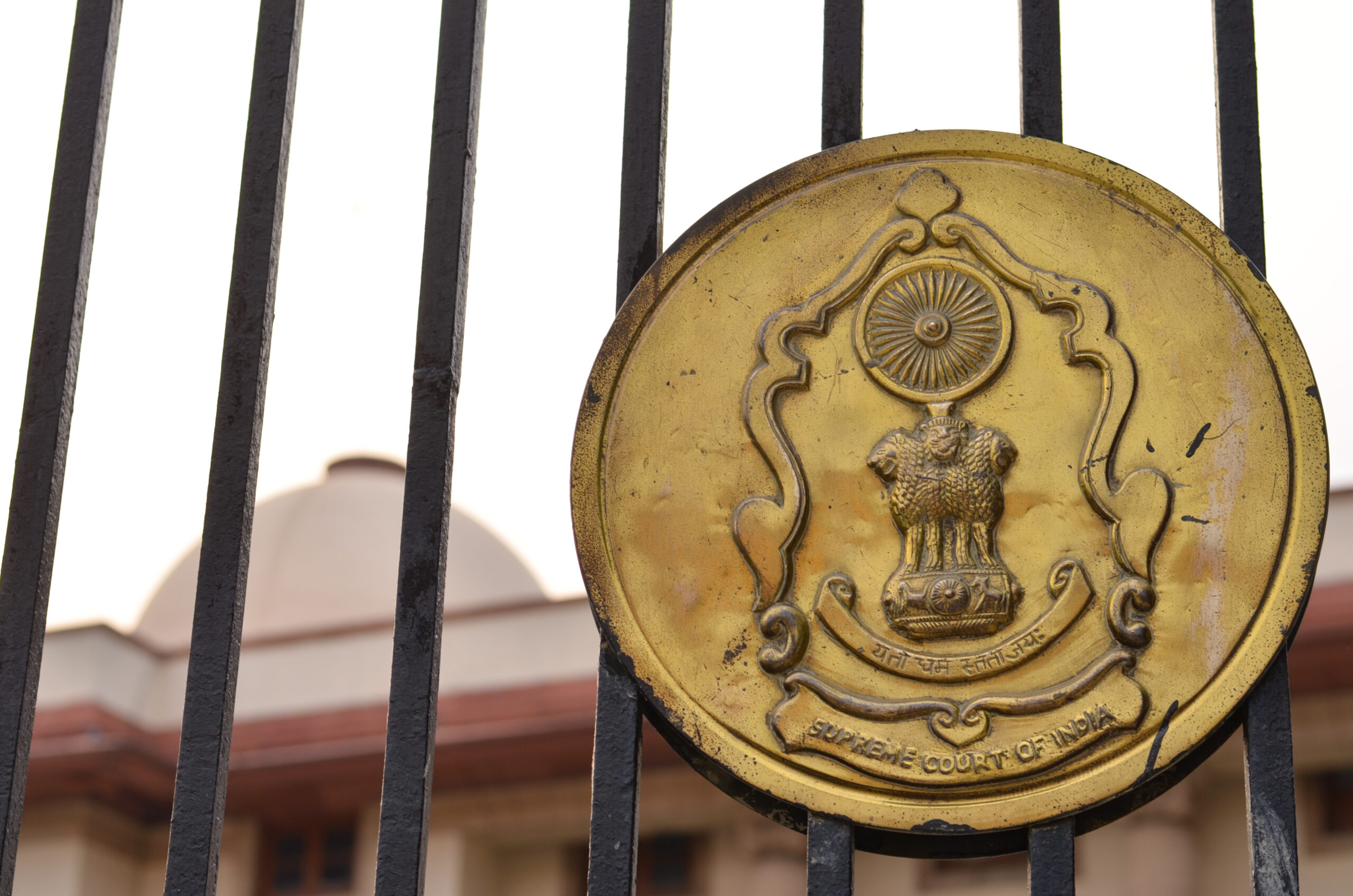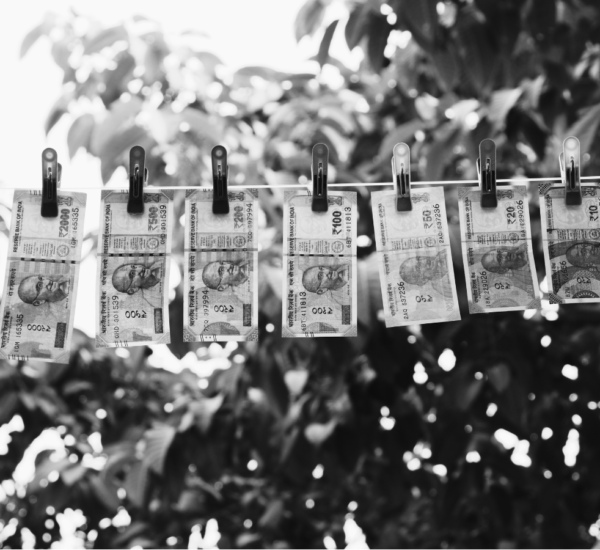
Pratiksha Basarkar
This article seeks to provide a summary of the Supreme Court’s recent judgement dated 24.03.2023 in Arup Bhuyan v State of Assam [“Arup Bhuyan (2023)”] which overruled its previous decision in Arup Bhuyan v State of Assam, (2011) 3 SCC 377 [“Arup Bhuyan (2011)”]. It briefly notes the procedural history of the case and the relevant statutory provisions. Thereafter, in a tabular format, it summarises the issues involved in the judgement and the observations and/or findings of the Supreme Court in Arup Bhuyan (2023) as well as Arup Bhuyan (2011).
- Procedural History
In Arup Bhuyan (2011), a division bench of the Supreme Court comprising Justices Markandey Katju and Gyan Sudha Misra was deciding an appeal against the judgement of a Designated Court under the Terrorist and Disruptive Activities (Prevention) Act, 1987 [“TADA”], which had convicted the appellant under Section 3(5), TADA (TADA subsequently lapsed in 1995). The court read down the provision to mean that mere membership of an unlawful association was not enough to be incriminating, as further discussed below. In reaching its conclusion, the Supreme Court in Arup Bhuyan (2011) relied on its earlier judgement, State of Kerala v Raneef, (2011) 1 SCC 784, where the Court had upheld the lower court’s decision to grant bail to the accused, who was charged inter alia under the Unlawful Activities Prevention Act, 1967 [“UAPA”]. The Court in Raneef noted that the accused was alleged to be a member of the Popular Front of India (yet to be notified as a terrorist organisation). Relying on US case law, the Court noted that in any event, mere membership of an unlawful/terrorist organisation was not enough to constitute an offence.
The Union of India raised objections before the Supreme Court, inter alia stating it was not a party to these decisions, which were prejudicial to its interests, and it therefore ought to have been heard. The Union sought permission to file review petitions. The State of Assam also filed review petitions. Consequently, the issue in Arup Bhuyan (2011) and Raneef was referred by judgement dated 26.08.2014 to a larger bench of 3 judges comprising Justices MR Shah, CT Ravikumar and Sanjay Karol for review. This resulted in the recent decision in Arup Bhuyan (2023), where the Supreme Court was called on to exercise its review jurisdiction and decide whether Arup Bhuyan (2011) and Raneef had been correctly decided.
- Relevant Provisions: The following provisions were mainly at play in Arup Bhuyan (2023) [emphasis supplied].
Terrorist and Disruptive Activities (Prevention) Act, 1987
- Section 3(5) penalises membership of a terrorist organisation: “Any person who is a member of a terrorist gang or a terrorist organisation, which is involved in terrorist acts, shall be punishable with imprisonment for a term which shall not be less than five years but which may extend to imprisonment for life and shall also be liable to fine.”
Unlawful Activities Prevention Act, 1967
Section 10(a)(i) penalises membership of an association which is declared unlawful. Section 3 lays down the procedure to be followed by the central government for declaring an association as unlawful. It requires the government to publish such a declaration by notification in the Official Gazette, and further publicise such notification by printing it in newspapers etc. Section 4 requires the government to refer such notification to a Tribunal constituted under the Act. The Tribunal is then required to decide, after hearing the association, its office bearers or members, whether there is sufficient cause for the organisation to be declared unlawful. Section 5deals with the constitution of the Tribunal and provides that it would comprise a High Court judge.
- Section 10(a)(i) makes membership of an unlawful association an offence: “Where an association is declared unlawful by a notification issued under section 3 which has become effective under sub-section (3) of that section,-
(a) a person, who-
(i) is and continues to be a member of such association; or
…
shall be punishable with imprisonment for a term which may extend to two years, and shall also be liable to fine…”
- Section 3 provides the procedure for declaring an association unlawful: “(1) If the Central Government is of opinion that any association is, or has become, an unlawful association, it may, by notification in the Official Gazette, declare such association to be unlawful.
(2) Every such notification shall specify the grounds on which it is issued and such other particulars as the Central Government may consider necessary:
Provided that nothing in this sub-section shall require the Central Government to disclose any fact which it considers to be against the public interest to disclose.
(3) No such notification shall have effect until the Tribunal has, by an order made under section 4, confirmed the declaration made therein and the order is published in the Official Gazette:
Provided that if the Central Government is of opinion that circumstances exist which render it necessary for that Government to declare an association to be unlawful with immediate effect, it may, for reasons to be stated in writing, direct that the notification shall, subject to any order that may be made under section 4, have effect from the date of its publication in the Official Gazette.
(4) Every such notification shall, in addition to its publication in the Official Gazette, be published in not less than one daily newspaper having circulation in the State in which the principal office, if any, of the association affected is situated, and shall also be served on such association in such manner as the Central Government may think fit and all or any of the following modes may be followed in effecting such service, namely:—
(a) by affixing a copy of the notification to some conspicuous part of the office, if any, of the association; or
(b) by serving a copy of the notification, where possible, on the principal office-bearers, if any, of the association; or
(c) by proclaiming by beat of drum or by means of loudspeakers, the contents of the notification in the area in which the activities of the association are ordinarily carried on; or
(d) in such other manner as may be prescribed.
- Section 4 provides the procedure for adjudication by a Tribunal: “(1) Where any association has been declared unlawful by a notification issued under sub-section (1) of section 3, the Central Government shall, within thirty days from the date of the publication of the notification under the said sub-section, refer the notification to the Tribunal for the purpose of adjudicating whether or not there is sufficient cause for declaring the association unlawful.
(2) On receipt of a reference under sub-section (1), the Tribunal shall call upon the association affected by notice in writing to show cause, within thirty days from the date of the service of such notice, why the association should not be declared unlawful.
(3) After considering the cause, if any, shown by the association or the office-bearers or members thereof, the Tribunal shall hold an inquiry in the manner specified in section 9 and after calling for such further information as it may consider necessary from the Central Government or from any office-bearer or member of the association, it shall decide whether or not there is sufficient cause for declaring the association to be unlawful and make, as expeditiously as possible and in any case within a period of six months from the date of the issue of the notification under sub-section (1) of section 3, such order as it may deem fit either confirming the declaration made in the notification or cancelling the same.
(4) The order of the Tribunal made under sub-section (3) shall be published in the Official Gazette.”
- Section 5(1) provides that the Tribunal would comprise a High Court judge: “The Central Government may, by notification in the Official Gazette, constitute, as and when necessary, a tribunal to be known as the “Unlawful Activities (Prevention) Tribunal” consisting of one person, to be appointed by the Central Government:
Provided that no person shall be so appointed unless he is a Judge of a High Court.”
- Overview of the Judgments
The table below mentions the issues involved, along with the observations and/or findings of the court.
| Issue | Arup Bhuyan (2011) | Arup Bhuyan (2023) |
| What are the standards of judicial review applicable? | Not applicable. | There is no clear identification of or discussion on the standards of judicial review applied. The nature or extent of burden on the State to succeed in the review is not clarified. |
| Was the court justified in reading down the provision without making the Union of India a party and when the constitutional validity of the provision was not in question? | Yes (implied). The court proceeded to read down Section 3(5), TADA despite the Union not being a party to the case, and despite the constitutional validity of the provision not being in issue. | No. A provision of a statute cannot be read down without giving an opportunity to the Union of India; otherwise it is likely to cause enormous harm to the interest of the State. While it is ultimately for the court to interpret a particular statute, this cannot be done without hearing the Union. Further, the provision could not have been read down in the absence of any challenge to its constitutional validity. The court relied on Subramanian Swamy v. Raju (2014) 8 SCC 390 in support of this. (paras 11.1-11.5) |
| Is mere membership of a banned organisation incriminating, as stipulated in Section 3(5) of TADA and/or Section 10(a)(1) of UAPA? | No. Section 3(5), TADA cannot be interpreted literally. It will otherwise violate Articles 19 and 21 of the Constitution on freedom of speech and association and the right to life, respectively. (para 12) | Yes. Mere membership is incriminating under Section 10(a)(1), UAPA. To arrive at this conclusion, the court considered the following: UAPA was enacted subsequent to the Constitution (Sixteenth) Amendment Act 1963 which permitted restrictions on freedom of speech and association in the interests of ‘sovereignty and integrity of India’ with the aim of protecting these interests. Its objective was to effectively prevent certain unlawful activities as mentioned in its preamble. Section 10(a)(i) is in furtherance of UAPA’s object and purpose, and in consonance with Articles 19(1)(2) and (4). (paras 14.2, 14.3, 14.6)Sections 3 and 4 of UAPA provide a detailed procedure to be followed before an organisation can be declared unlawful. The government’s notification needs to be published, and is subject to approval by the Tribunal. After this process is done, if a person continues to be a member of the now unlawful organisation, then they are liable to be penalised. (para 14.5)The possibility of misuse of the provision was not relevant for its constitutionality. Section 10(a)(i) was not vague, unreasonable or disproportionate. If a person continues to remain a member, their intention to associate with the unlawful association becomes clear. (para 16)The provision was cautiously worded to punish only those who continued being members. If a person continued to be a member despite having knowledge of the consequences, they could not submit on possible chilling effects of the provision. They were liable to be punished, especially as long as the provision remained constitutional. (para 17.1) |
| If mere membership is not enough, what else must be proven? Should mens rea be established and/or should there be a further overt art? | A person should be an active and not a passive member. Mere membership is not incriminating, unless the person resorts to violence, incites people to violence, or creates public disorder by violence or incitement to violence. To arrive at this conclusion, the court relied on US case law, and the Supreme Court’s decision in State of Kerala v Raneef, (2011) 1 SCC 784. In Raneef, the court had agreed with the US decision in Elfbrandt v Russell, 384 US 11 (1966). (para 12) | Mere membership is enough. Mens rea is not required. Case law under the IPC in this regard would not be applicable while considering UAPA provisions. Offences under IPC and UAPA are different. Under the UAPA, declaring an association unlawful requires following due procedure under Section 3, subject to the Tribunal’s approval under Section 4 and after giving due opportunity to the association, its office bearers and even the member. (para 15) |
| Do decisions from the United States on freedom of speech and membership of banned organisations apply in the Indian context? | Yes. Fundamental rights in India are similar to the Bill of Rights in the US Constitution. (para 12) | No. Unlike in the US, freedom of speech is not an absolute right under the Indian Constitution. It is subject to reasonable restrictions under Articles 19(2) and 19(4), including in the interests of public order and sovereignty of India. Thus Arup Bhuyan (2011) erred in following decisions of the US Supreme Court without considering the Indian legal position and differences with the US legal system. While US decisions may be considered, Indian courts must consider the difference in the nature of applicable laws in the two countries. (para 13-13.1) Justice Karol’s concurring opinion explores the difference between the US and Indian legal positions concerning freedom of speech. He holds that US decisions primarily involve indictment on the basis of membership of political organisations or free speech incidents advocating overthrow of government. However, Indian law only seeks to ban organisations that aim to compromise the sovereignty and integrity of India, and are notified as such. This furthers the objective of UAPA, which also provides for a system of checks and balances under Sections 3, 4 and 5. As held in Shreya Singhal v. Union of India, (2015) 5 SCC 1, there is a world of difference between the US and Indian scenario. Placing singular reliance on decisions given in a different scenario and in a demonstrably different constitutional position is not justified, especially when national security and sovereignty concerns are involved. (paras 28, 48-52) |
Pratiksha Basarkar is a Senior Associate (Litigation) at Project 39A, National Law University, Delhi.





